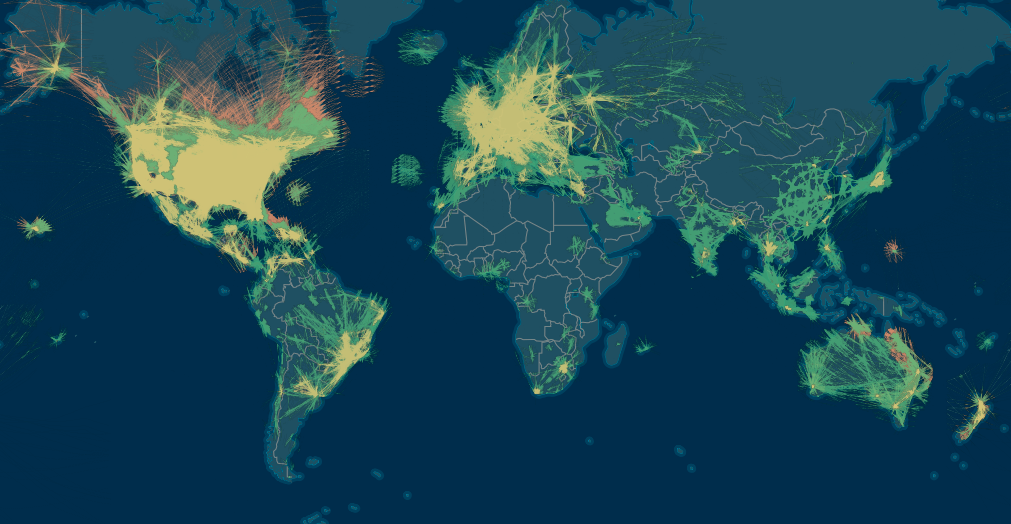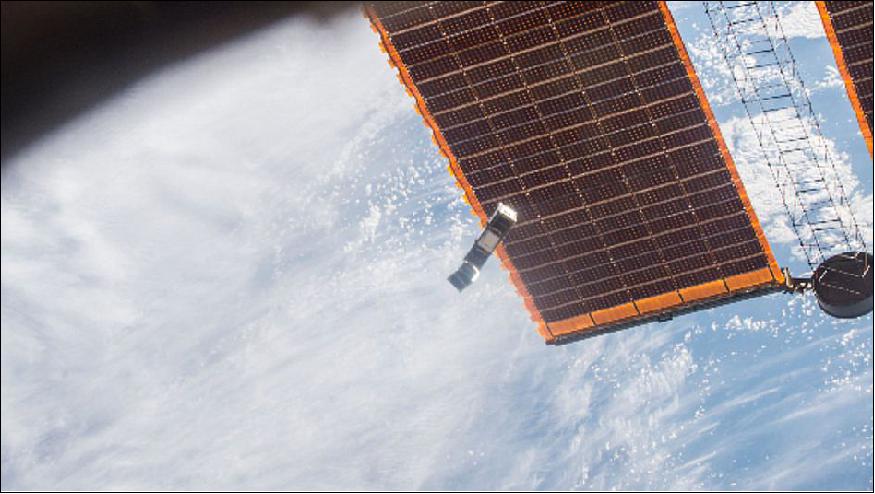For the first time, it will be possible to continuously monitor aircraft anywhere in the world.

It does not always end so happily - Malaysia Airlines flight 370 disappeared three years ago, on March 8, 2014, and has not yet been found. But now air traffic control organizations around the world will be able to continuously monitor aircraft anywhere in the world.
As is known, the information “on those sites where you can watch the aircraft in real time” is provided by a network of radio receivers connected to the Internet. Radio receivers receive ADS-B messages from the aircraft containing the current location of the aircraft and transmit this data to the service server.
This is how the placement map of radio receivers that transmit data to the Flightaware service looks like, and the placement has an obvious "synanthropic" character:
')

Usually, the station’s observation radius is 150-300 km, in some successful cases, more than 400 km. Therefore, it is impossible to track not only throughout the world, but also in the greater half of it, where airplanes are visible only to each other. This is clearly seen on the following map :

Green color - ADS-B, yellow - MLAT . Information about aviatrafika in the rest of the globe until recently was not. The display of many flights on the Flightaware services, Flightradar24 is an interpolation based on the departure and arrival time, statistics for the elapsed time, and correction in the case of receiving signals from a station on a certain flight segment by any network station.
On January 14, 2017, the first 10 telecommunications satellites Iridium NEXT were put into orbit on the Falcon 9 and on which the Aireon ADS-B equipment was placed with additional load.

The deployment of the aeronautical tracking space tracking system is scheduled for completion in 2018 (a constellation of 66 satellites).
At the end of January, a test switch-on was carried out. The first ADS-B message was received from a Korean Airlines flight 530, the first fully decoded message was from a SAS 4576 flight, an additional bonus was the reception of a message from a NextJet 594 aircraft located at an airport in Sweden. During the tests, messages were taken from 150 flights. The company "saw" airliners, airplanes, helicopters over the ocean and in remote corners of the Earth. On March 2, the company received full control over its equipment. The data is supposed to be sold to airlines and other interested parties. It is expected that this data can help reduce fuel costs, improve flight safety and improve the efficiency of flight route selection.

Previously, an experiment with the reception of ADS-B messages from orbit was conducted by ESA using 3U CubeSat GomSpace Express-3, which was launched on October 5, 2015 from the ISS and existed in orbit until October 18, 2016.


The next map shows the location of the aircraft, taken by the satellite GomSpace Express-3 for six months of work in orbit. The main air corridors are visible.

Source: https://habr.com/ru/post/370247/
All Articles